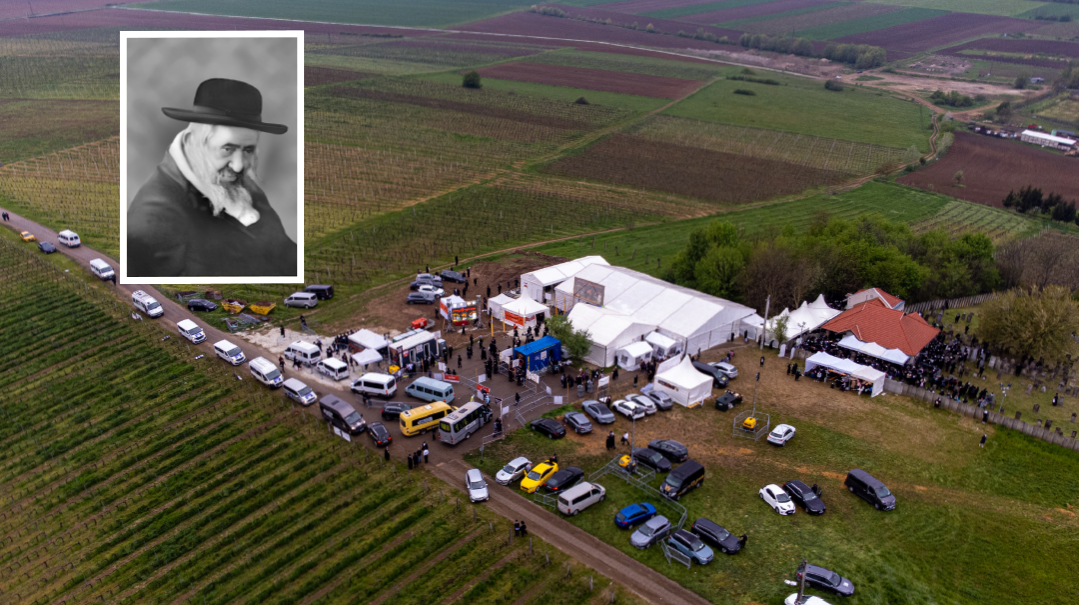First Port of Call
| March 21, 2023From the new terminal on the Haifa coast, it looks like China is taking over the Israeli shipping industry, but don’t worry, it’s just a 25-year lease
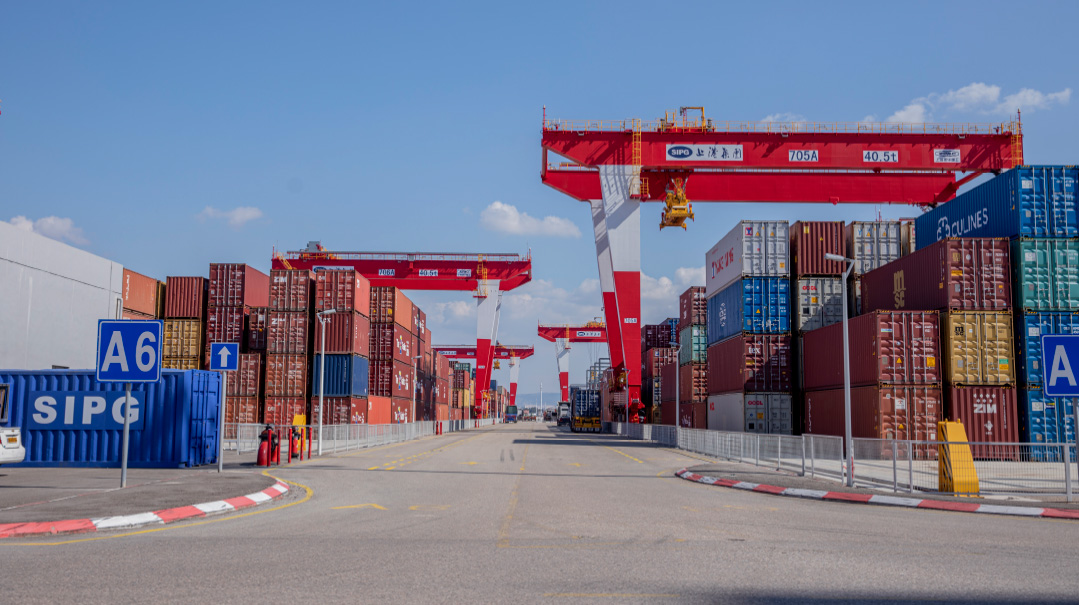
The first tip-off that the new Haifa port we’ve come to investigate belongs to another world was the large sign in Chinese that greeted us at the entrance to the SIPG (Shanghai International Port Group) Bayport Terminal in Haifa Bay. It might sound surprising, but this terminal on Israel’s northern Mediterranean coast is actually one of two new ports in Israel that were built and are managed by foreign operators following privatization reforms (the second is the Dutch-managed Southport Terminal in Ashdod).
Both are run according to what Israelis call the “slipper” system, a managing protocol that exists in several other ports around the world. Basically, it means that Israel provides the foreign group with a 25-year lease of “slippers” with which to walk around in its domain and operate the place without making muddy footprints.
But it’s not exactly that China is taking over Israel’s shipping industry. It’s just being operated by a Shanghai-based company — even though in Communist China, all businesses are tied to the Chinese government in an inextricable way.
Still, the first condition for the tenders in the new ports, which have been operating for the past year and a half, was that the operating company had to be a foreign international company in order to generate competition and bring to Israel the knowhow from other top-trading countries. Of course, China jumped at the opportunity. Access to the Middle Eastern and European markets via Haifa has always been a coveted asset, and China knows that its profit potential is enormous.
It’s been decades since a new port was built in Israel. While the old ports all belonged to the State, now, for the first time, the Chinese are creating competition with the Bayport Terminal, India’s Adani Group has begun operations in the old Haifa Port (which the Chinese bid on as well, but India — which has close relations with Israel — was favored so as not to provide China with too much influence in Israel, a possible strategic risk for the future), and in Ashdod, the Dutch are operating the Southport Terminal. All this will translate into cheaper goods and more purchasing power for the consumer.

Remote Control
Bayport Terminal, the latest addition to Haifa’s coast, is almost a kilometer long and has the capacity to process a million shipping containers annually. And yet, despite its enormous production capabilities, there are only about 100 employees in the entire operation. That’s because most of this port works on automation technology, from tracking containers to unloading the massive amounts of cargo to contacting and directing drivers.
And now we’re really starting to get dizzy. As we don our security vests and helmets, we look up to eight separate 100-meter-long bridge cranes, each of them responsible for unloading 25 shipping containers per hour, 24 hours a day, from the ships docked at the port. The cranes are computer-controlled to remove specific containers from the ships and then lower them onto waiting trucks below. From there they will be driven to their ultimate destinations. The crane operators work in three shifts, so that the port remains active 24 hours a day.
As it can be quite nerve-wracking for the driver to see a multi-ton container swinging overhead while its movements are being controlled by a computer panel inside an office, actual humans are on hand for the last few meters to ensure both the container and the driver remain in one piece.
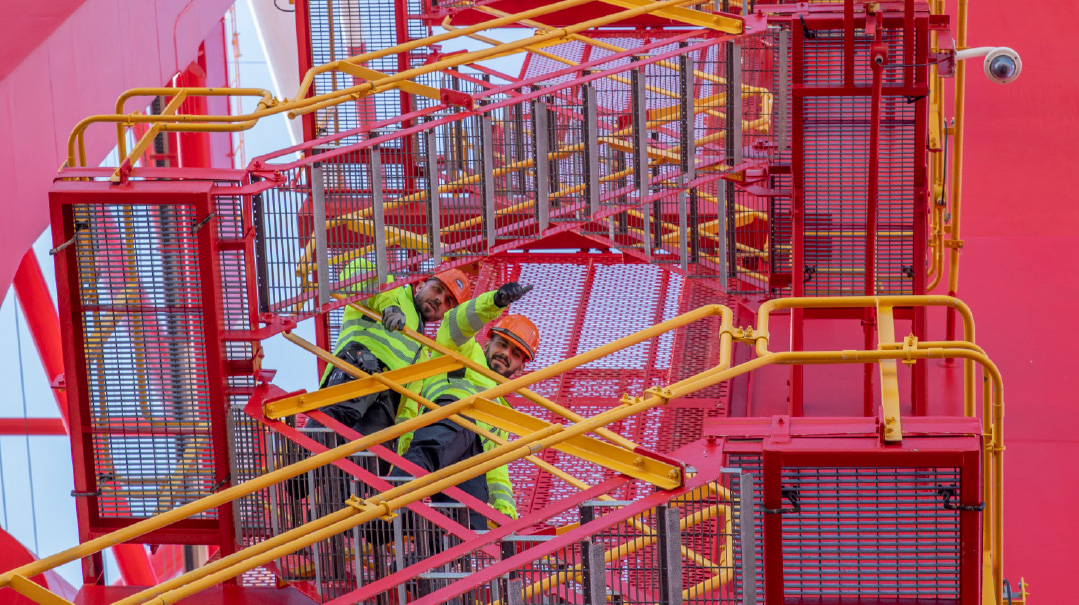
Up Up and Away
We’re about 100 meters in the air, and somewhere down below, we watch a dozen ships, their cargo unloaded, set sail calmly in the lane that leaves the bay. And suddenly, everything starts to sway from side to side. Maybe that’s because we’re standing on a mesh floor, at the top of a crane that rises to the height of a 25-story building — and because it’s intentionally not stable, but rather, suspended by thick cables that move as necessary. The legs of the crane are actually wheels that move on a track fixed into a concrete floor, but even that doesn’t really stand on solid ground. Rather, it is fixed onto an artificial island that… floats in the water.
Standing up here with knees like jelly, it feels like one big island of instability. Good thing the earthquakes in the region are over for now. Truth is, before we were granted our permits, we were questioned at length about whether we were afraid of heights. There are not a lot of outsiders who get permits to come up here, and wobbly legs notwithstanding, it was worth the bureaucracy.
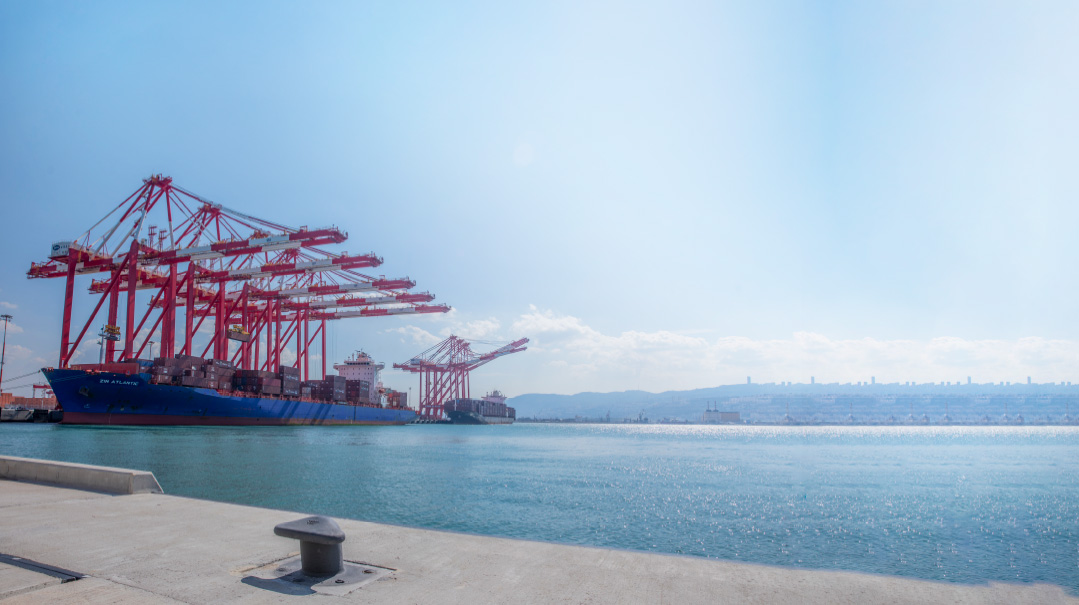
Out to Sea
When the State of Israel opened its doors to new ports, the various workers’ unions, who don’t like to rock the status quo, went a little wild — but that didn’t stop the plan from moving ahead.
The tender to operate the new port was won by the Shanghai-based company that operates the largest port in the world. But Haifa’s coastline is already choking with factories and ports, and there is no more room. So what could the Chinese company, whose agreement included not only operating the port but building it, do? They built a port at sea. Not a new idea, really — Herod already thought about it 2,000 years ago.
Six million tons of stone were brought to the site to build an 882 meter-long breakwater, with more than a kilometer protecting the port from the turbulent sea. Among the millions of tons of steel and stone, 13 million cubic feet of sand was brought in as well, although people familiar with the Haifa coast might be surprised — they certainly don’t remember a landfill ever being there.
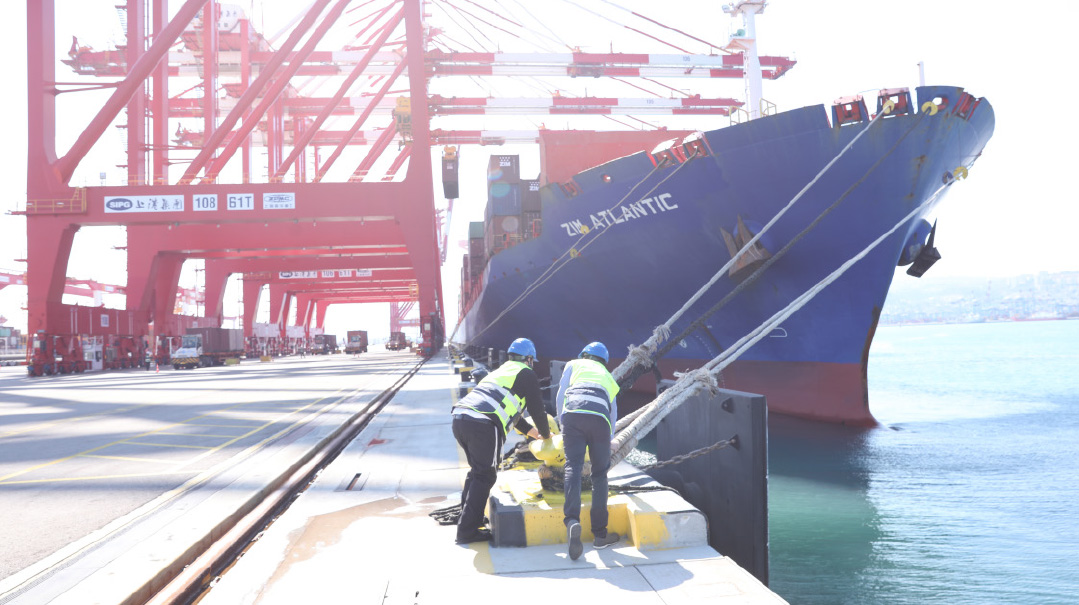
Unloaded
We watch from above as a loud alert indicates the arrival of a new client: the Zim Atlantic, a cargo ship carrying some 3,000 containers. And that’s just a mid-size ship. Some freighters carry over 20,000 containers. We’re standing on “crane 108,” the one designated to unload the merchandise.
The containers start coming off the ship. The steel wheel attached to the cables begins to rotate and the huge metal boxes are taken off one after another, until the first level is finished. Then, to our amazement, the crane lifts the floor of the deck and continues to extricate containers from the belly of the craft.
The cranes are Chinese-manufactured, and many of the ground technicians are Chinese as well, brought over to these parts in order to provide solutions for any issues that might crop us with the cranes — expertise that the Israelis don’t yet have.
We look for the actual crane operators, but they’re nowhere to be found. Somewhere out there, in the old ports, there are crane operators with maps and papers, marking down with a pen one container after another. But here, computers have taken their place — and those unmanned cranes give the feeling of a ghost city. We generally imagine a port as a noisy place filled with screaming dock hands, longshoremen, horns and whistles, but here, it’s actually eerily quiet and tranquil — a port of the future.
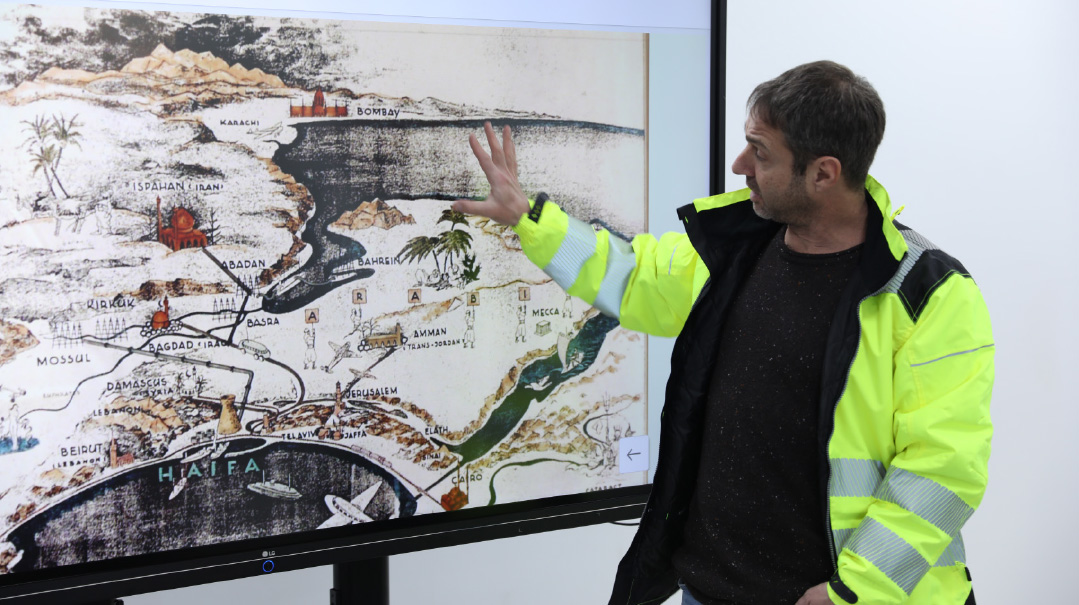
Staying Invested
The Chinese couldn’t just take an old port and operate it according to obsolete norms — they’re experts at starting from scratch. And that’s one thing that made the Haifa port so attractive, along with the desire to position themselves in such a strategic location, a gateway to the entire Middle East.
“We’re very happy that we can invest in the State of Israel,” says Mi Hau Chiang, CEO of the Bayport Terminal. “In recent years, Israel has become a country where everything is developing fast, and it’s a place worth investing in.”
While SIPG was the only bidder on the first tender (which included building the port from scratch), it’s interested in continuing on in 2046, after the 25-year lease is up. “This is the first port we’ve invested in outside of China, so we would hope we’ll win the next tender as well,” says Chiang, who has been working with the port giant SIPG for almost 30 years.
Chiang, who was born in Shanghai, says that all the locals know the story of the Mirrer Yeshivah, and considers it a privilege to “live the history that is here in the Holy Land.”
The Israeli manager of the Bayport Terminal, Yoav Zuckerman, is also the author of a book Avodat Nemalim (a Hebrew play on words loosely translated as “slow and steady,” where “nemalim” is a word for both “port” and “ant”), a fascinating account of the little-known battles surrounding the Israeli ports over the last few decades. He told us how Bibi Netanyahu was really the main force — with the encouragement of former Transportation Minister Yisrael Katz — in creating the revolutionary modernization and international acquisition of the ports.
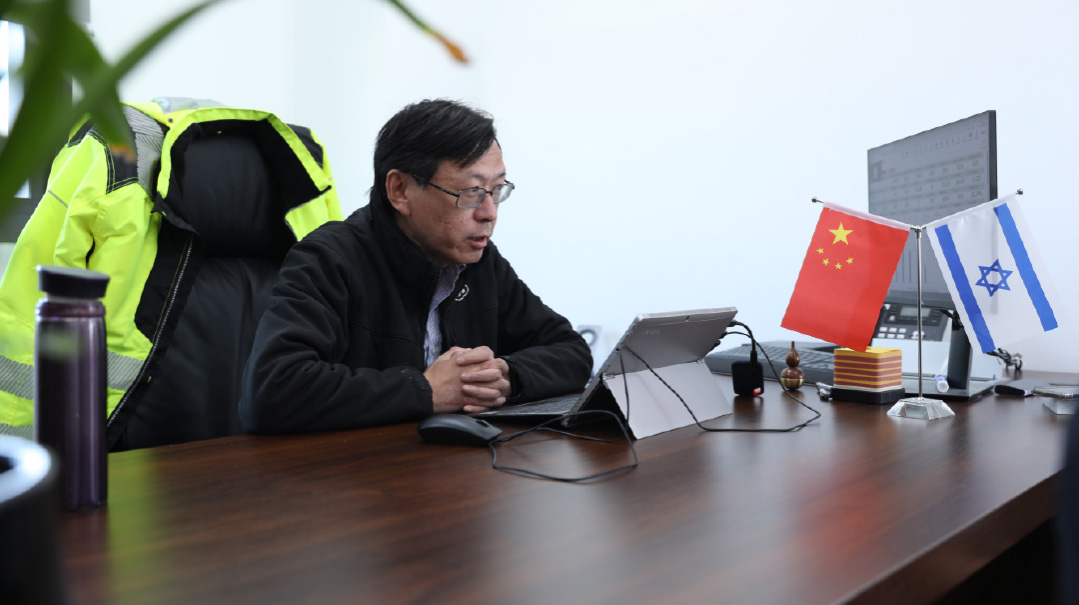
Straight Through
Israel is the gateway from Europe to the Middle East and beyond to locations like the UAE and other countries that pass through Jordan. The Suez Canal was always considered the access point, but why should shippers pay a few hundred dollars for every container, not to mention the cost of every moment at sea, every port stop, and other factors that make merchandise more expensive, instead of unloading it all in Haifa? From Haifa, a train line is planned to take the merchandise across Israel to Jordan, which on the map, at least, looks so simple and logical. Looking out at the view, we already see that construction for the planned rail line is in full swing.
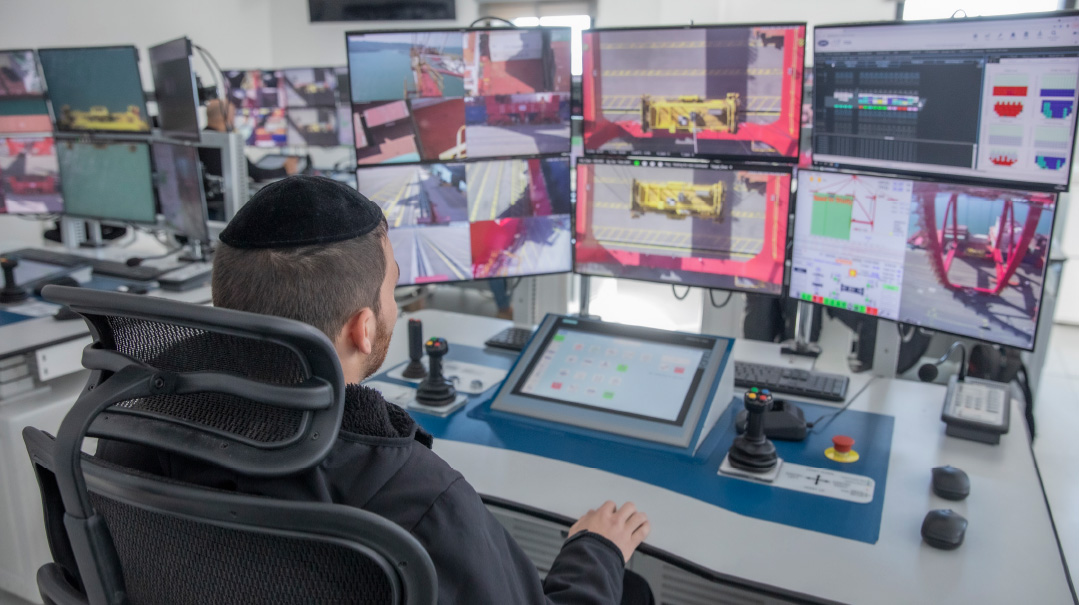
At the Controls
There aren’t too many people outside milling around the port. Even the truck driver, who comes to pick up the imports or unload containers for export, isn’t in the port for more than a few minutes. He stops at the entrance and presses a few keys on a computer; the container suspended in the air lands on his truck bed, and out he goes.
The people that make it happen are inside and focused on their screens. Every virtual crane operator sits in front of several screens and a few joysticks in this high-tech center as they “play” with the port. When you’re dealing with moving several-ton boxes through the air and there is the need for perfect execution upon landing so no one gets hurt, or worse, the stress could be overwhelming. But, says one operator, “It just requires a lot of experience. Once you know how to operate the controls and train yourself to pay close attention and read your maps, it’s a piece of cake.”
The control room, we notice, is built like a fortification, in order to be prepared for any situation. During war, the port can continue to operate, as everyone is sheltered inside.
“You know,” says Tal, the human resources director, “this is the kind of work that’s perfect for someone who’s able to sit for hours in front of a Gemara and concentrate. Just like you believe that every person who sits in a beis medrash learning Torah is essentially operating cranes that keep the whole world running. We may be the high-tech nation, but we’re still the People of the Book.”
(Originally featured in Mishpacha, Issue 954)
Oops! We could not locate your form.



